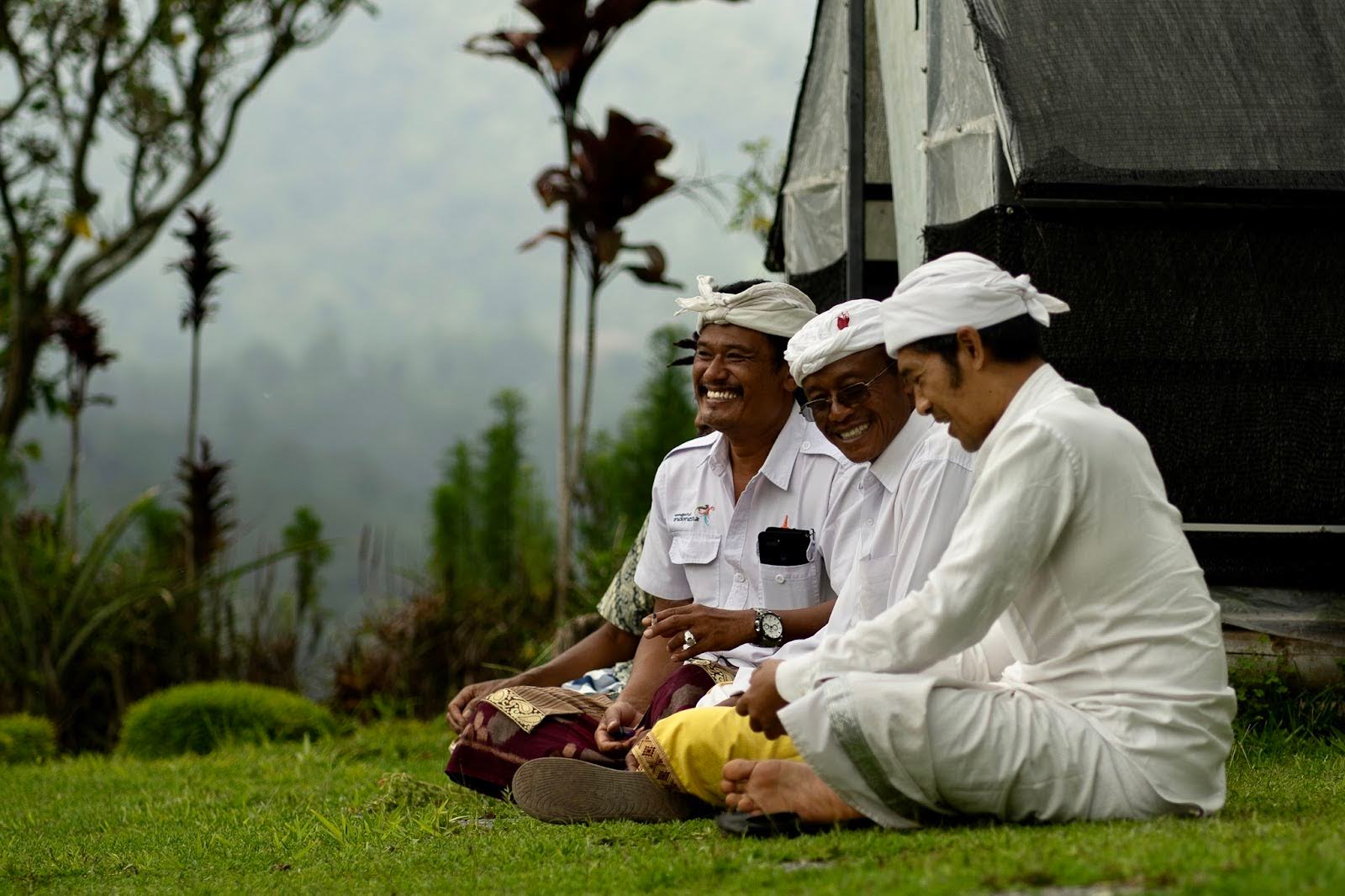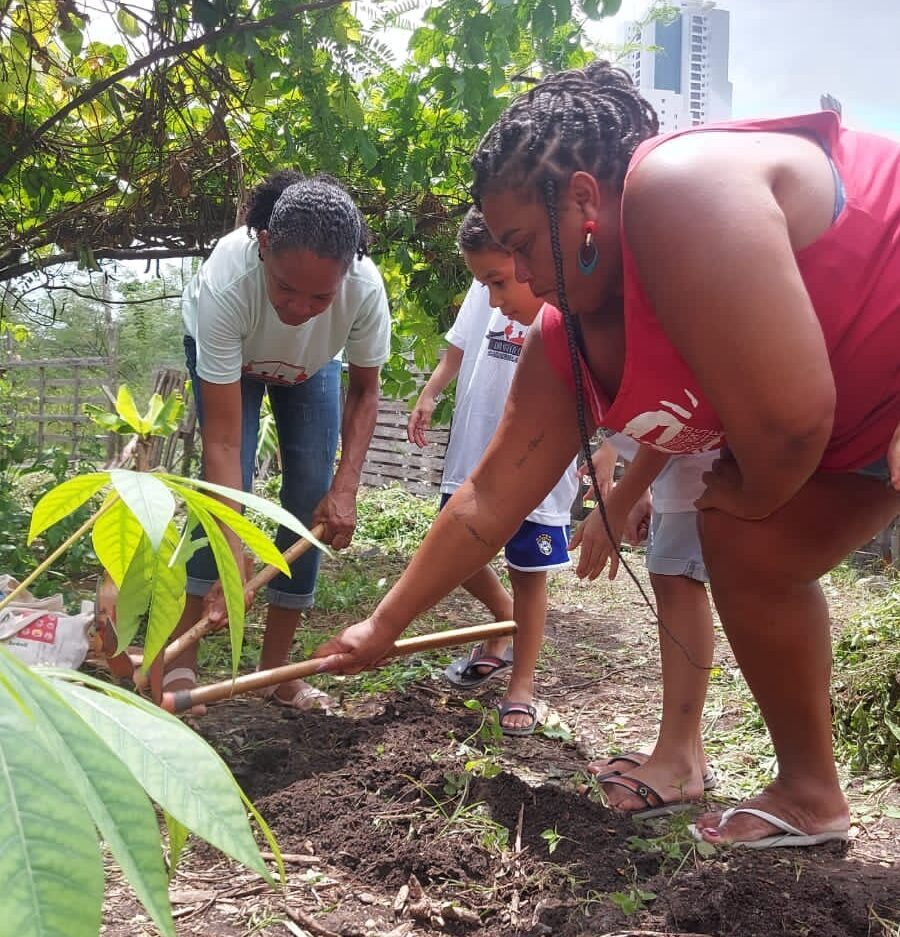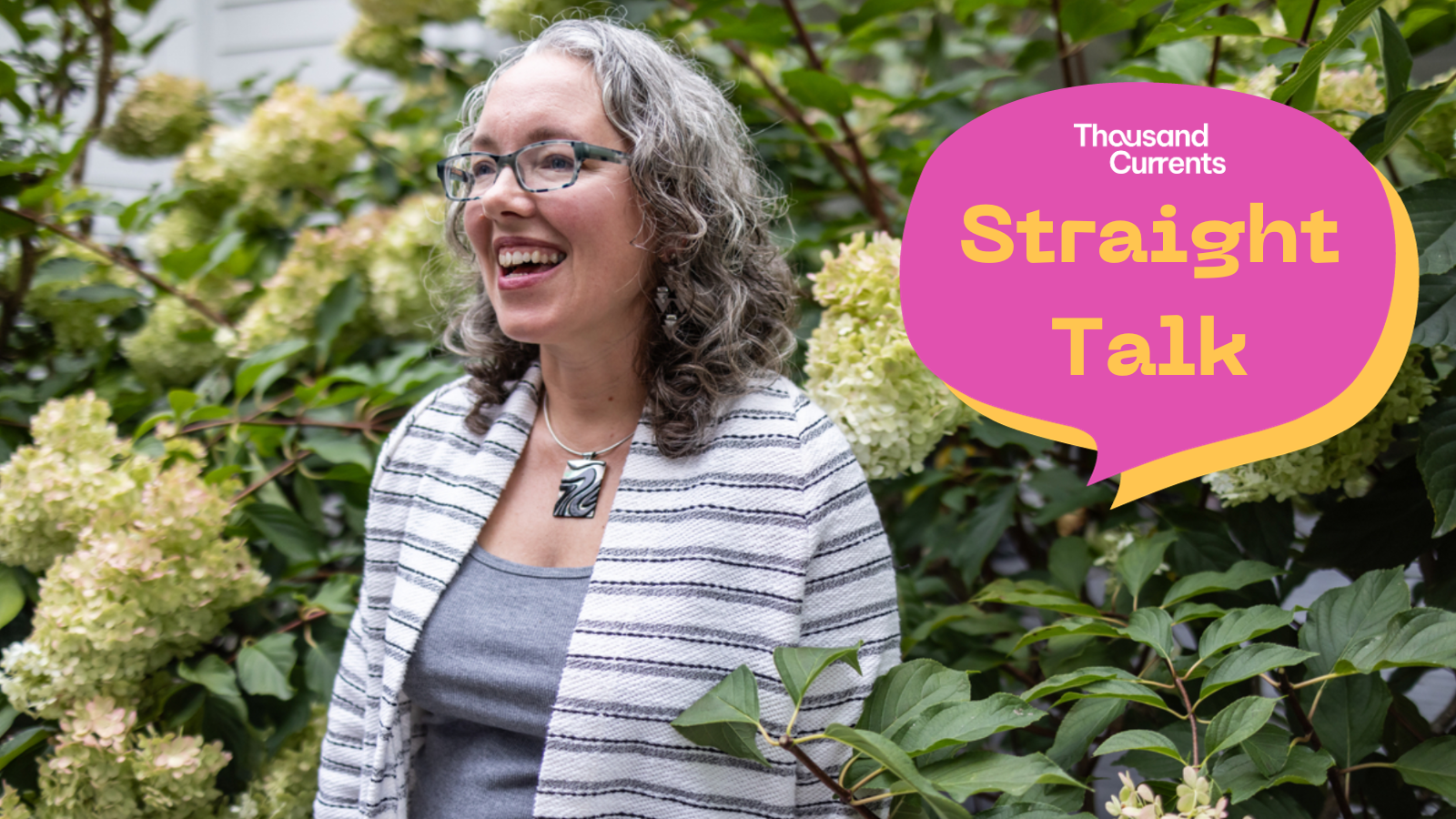At 4,000 meters high, surrounded by mountaintops, looking over a deep blue lake, I am welcomed by a group of indigenous Quechua members in the Andes Mountains of Peru. They are members of the Association of Communities in the Potato Park (ACPP), Parque de la Papa, which unites more than 6,000 members from five communities: Amaru, Chawaytire, Pampallaqta, Paru Paru, and Sacaca.
“Buen Vivir”: Learnings from Indigenous Worldviews on Biocultural Diversity
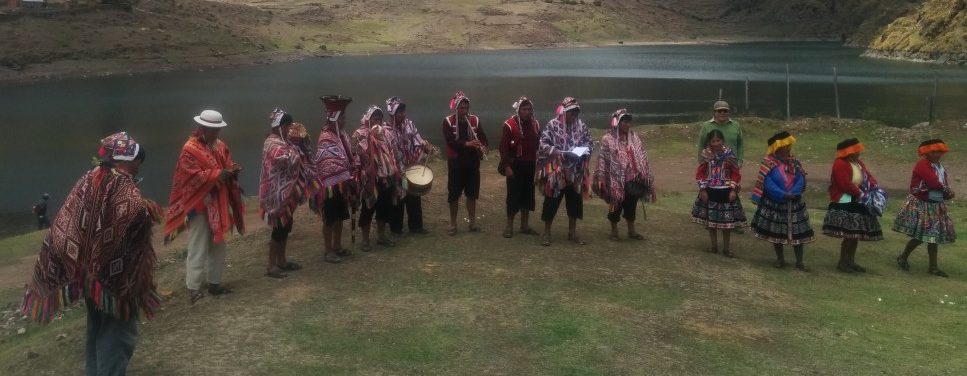
By Katherine Zavala, former Director of Programs
This article originally appeared in the summer edition of Langscape Vol. 4, Issue 1 published by Terralingua.
The mountains around me are dry and bare. This is not the usual vision of the Andes landscape,where indigenous villagers are accustomed to seeing snow-covered tops and ice trickling down. Snow has always meant that there will be water to nourish the biodiversity in the Andes. This is no longer the case.
“We used to grow our food based on what the Apus told us,” says an indigenous spiritual healer from the Amaru community. The Apus are the spirits of the sacred mountains that guard the communities.
“We used to consult with the mountains, the plants, and the animals, but we’ve seen that the plants are confused. They are flowering when they’re not supposed to. We are losing confidence in what the plants are telling us.”

Indigenous Quechan members from the Amaru community welcomes me in the Andes Mountains, near Pisac, Peru, December 2014. Photo by Katherine Zavala.
The mountains around me are dry and bare. This is not the usual vision of the Andes landscape,where indigenous villagers are accustomed to seeing snow-covered tops and ice trickling down. Snow has always meant that there will be water to nourish the biodiversity in the Andes. This is no longer the case.
“We used to grow our food based on what the Apus told us,” says an indigenous spiritual healer from the Amaru community. The Apus are the spirits of the sacred mountains that guard the communities.
“We used to consult with the mountains, the plants, and the animals, but we’ve seen that the plants are confused. They are flowering when they’re not supposed to. We are losing confidence in what the plants are telling us.”
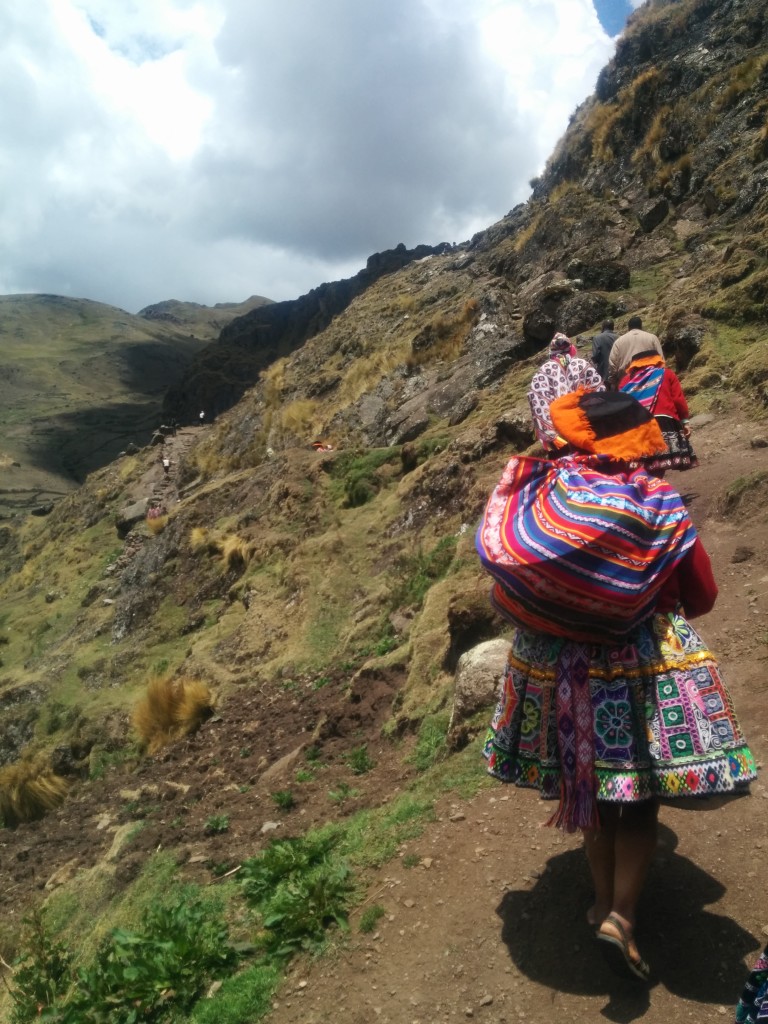
Hiking up the brown and bare mountainsides of the Andes to get a better view of the lake, December 2014. Photo by Katherine Zavala.
Indigenous members from the Amaru community shared with me that climate change is affecting the conditions for growing potatoes. At higher altitudes, pests can’t survive, but with global warming, the indigenous farmers have to go higher and higher to build more adequate conditions to cultivate potatoes.
With the support of a long-term relationship with Asociación ANDES (Association for Nature and Sustainable Development)—a Cusco-based local organization that works closely with indigenous communities to protect traditional knowledge, biodiversity, and seed sovereignty—the five indigenous communities of ACPP are building their autonomy and establishing themselves as an exemplary model of an indigenous-managed park for biodiversity conservation.
For five years, the Association ANDES has followed a community agreement to establish the Potato Park as an Indigenous Biocultural Heritage Area. This model describes a community-led and rights-based approach to conservation, which ensures local livelihoods using the knowledge, traditions, and philosophies of indigenous peoples related to the holistic and adaptive management of their landscapes, ecosystems, and biological and cultural assets.
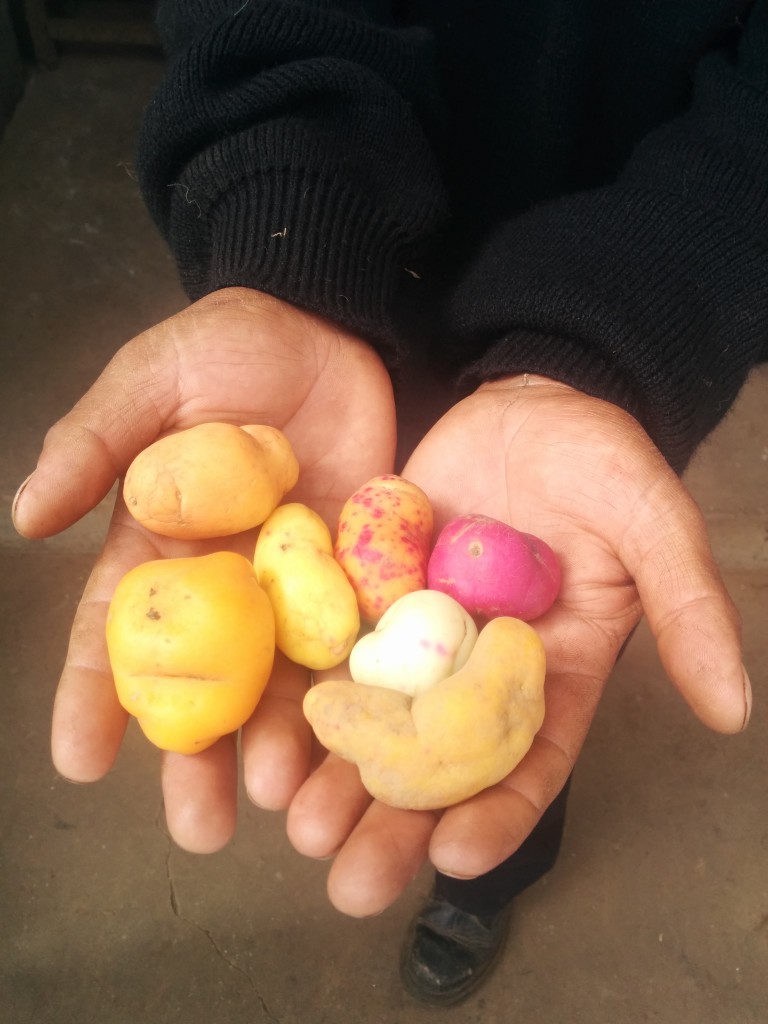
Peru has over 1,400 varieties of potato in the Andes Mountains, November 2014. Photo by Katherine Zavala.
I learned that the main principle of ACPP is keeping the tradition of Sumaq Kawsay, a term closely related to the concept of Buen Vivir or “right living,” reflecting a respectful co-existence with Mother Earth and the ancestral spirits.
Buen Vivir is a way of living that was shared with me by indigenous communities based in Chiapas, Mexico. Many of these communities live in the autonomous municipalities that work closely with Thousand Currents Partner, DESMI (Socio-Economic Development of Indigenous Mexicans). The notion of building community self-determination is based on an agreement that we all want to live well, respecting the rights of all species living on Mother Earth. It is the ancient wisdom and stories of learnings and awakenings passed through generations that can give us the solutions, ideas, and historical knowledge that expands our imagination to build a peaceful, diverse, rights-based society for all.
My journey with Thousand Currents has been a long one, spanning almost 10 years. This year, Thousand Currents is celebrating its 30th anniversary of being a San Francisco-based organization that has evolved to identify, evaluate, and nurture the best ideas of local leaders and organizations to address challenges found at the intersection of food sovereignty, economic justice, and climate resiliency. For over a decade, Thousand Currents has practiced a Partnership Model of grant-making that is first and foremost relationship-based, combining longterm support and flexible funding.
In January 2014, Thousand Currents launched its revamped Theory of Change, articulating the short-, medium-, and long-term outcomes of the four program areas that emerged from an inclusive and participatory evaluation process with indigenous leaders and communities among Thousand Currents Partners. The four areas are community self-determination, organizational resilience, global solidarity, and advocacy for social justice giving.
For indigenous-led organizations, global solidarity is also of paramount importance. In order to learn, deepen, and scale the impact of their work, partner organizations need to enhance their capacity for collaboration and joint strategy development with larger movements. While the indigenous movement has gained recognition globally, this process has been slow, and protection of rights varies greatly across the globe. Thousand Currents Partners in indigenous communities have underscored their desire to build stronger linkages with regional, continental, and global movements. As DESMI in Chiapas, Mexico puts it, “If globalization is affecting all of our countries, the struggles should be global.”
With this intention to build upon the need for global solidarity, Thousand Currents resourced four regional learning exchanges in India, South Africa, Brazil and Mexico. In September 2013, I witnessed the power of solidarity and Buen Vivir in the Chiapas Agroecology Learning Exchange. This event opened with a Mística, a ceremony of gratitude and offering to Mother Earth for her soil and food that nourishes us. Petul, an indigenous Tzeltal Maya student of indigenous theology, led the process of building the Mayan Altar within the Mística. The ceremony showed a cosmic cross with an orientation to the four directions: North, South, East, and West.
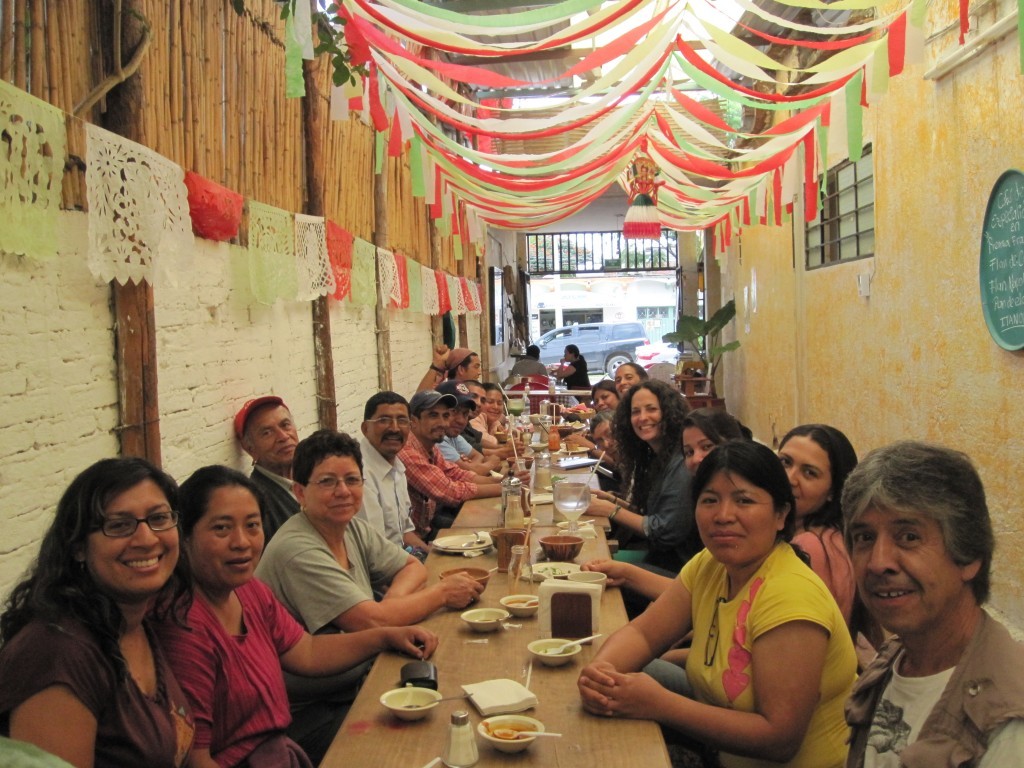
Thousand Currents and Grassroots International collaborated to bring Latin America partners together in September 2013 in Oaxaca, Mexico. Photo by Katherine Zavala.
Starting with the East, the direction from which the Sun comes up, a red candle is lit to symbolize the creation, the heart of the Sky and the Earth. Towards the West, where the sun rests, a black candle represents the path of the Creator, of nature. Crossing the East-West line is the path from North to South, which signifies the walk of humanity or Lekil Kuxlejal (a life lived in dignity). North is represented by the white candle, symbolizing the memories of the first ones, the original bones, and the cave of origin where all people were together and traveled from North to South. From North comes death along with the powers that kill and humiliate. At the other end, South is represented by the yellow candle for femininity, fertility and the hill of sustenance where maize and the Mother seeds are kept.
Through the traditional ceremonial rituals of the mística, we reflect in our hearts on the importance of our cultural roots. The Mayan Altar stays at the center of the room to symbolize our common will to continue the path of our ancestors, and to share this path with the new generations.
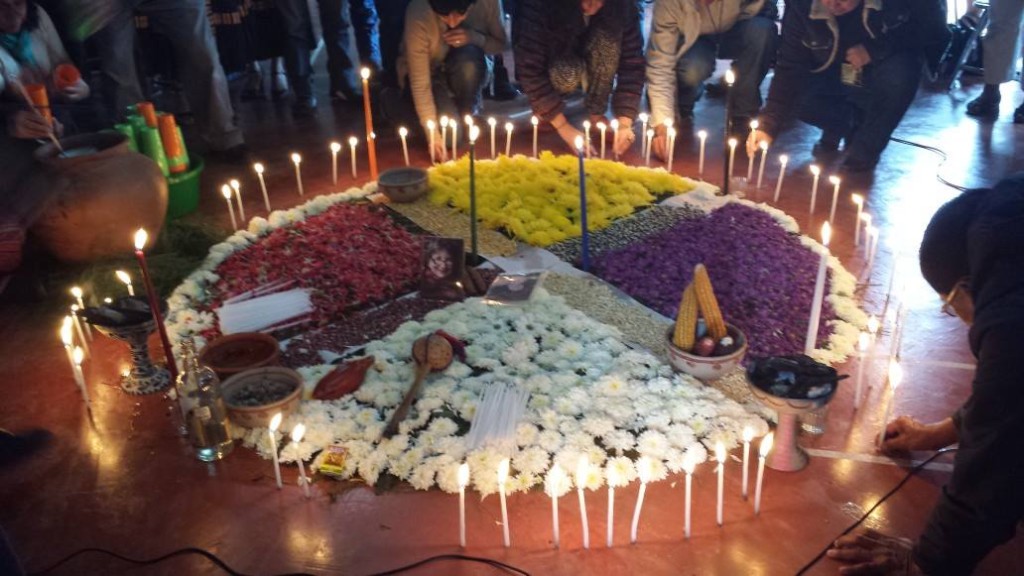
Mística Ceremony included a Mayan Altar built at the Agroecology Learning Exchange in Chiapas, Mexico in September 2013. Photo by Rajasvini Bhansali.
Living in the Global North, especially those of us living in urban centers, we’ve created and internalized our own story that we’re not connected to nature. But what I’ve learned is that nature has never been disconnected from us. We breathe the air, we drink the water, we feed upon the sunlight, as do all animals and plants. When we are grateful to the land we stand upon, and the food that we eat, it is clear that we are part of the planet’s ecosystem.
The cosmovision shared by indigenous communities tells us that we are interdependent with one another. Harming any natural resource is harming ourselves. We must work to stop abusing our planet and destroying ourselves. Instead, let’s strive for a life of dignity and Buen Vivir to protect and sustain our beautiful biocultural world.
Further Reading:
Balch, Oliver. The Guardian (2013). Buen vivir: the social philosophy inspiring movements in South America. Retrieved February 4, 2013.
Gudynas, Eduardo (2011). Buen Vivir: Today’s tomorrow. Development, 54(4), 441–447.
Related Stories
